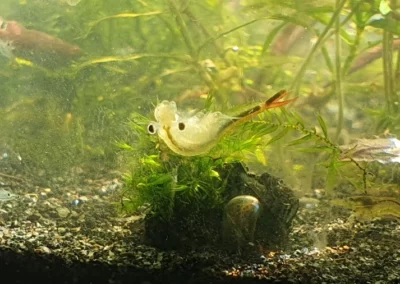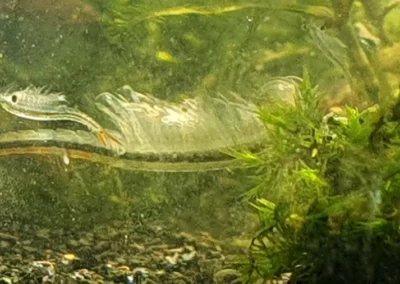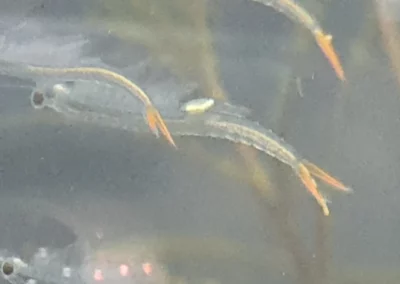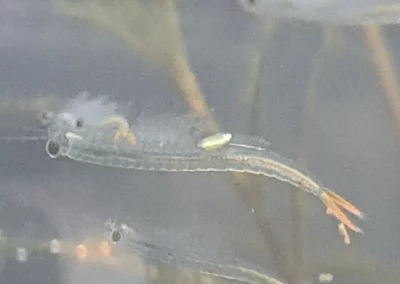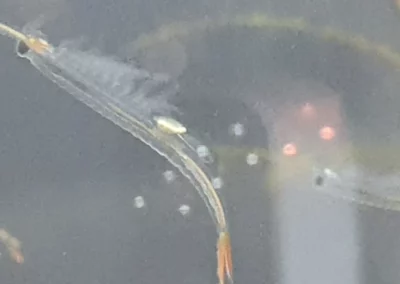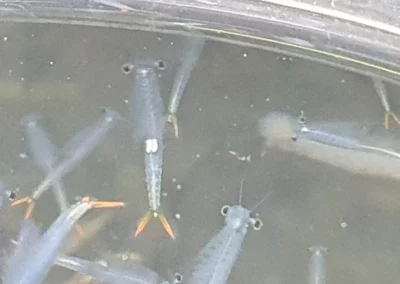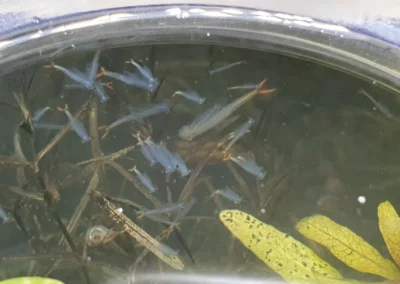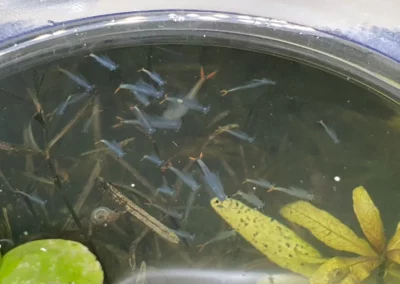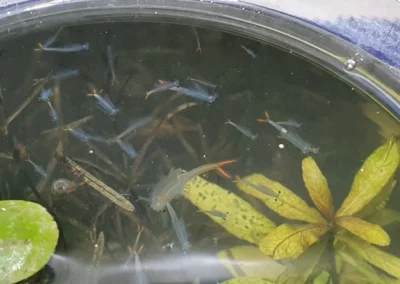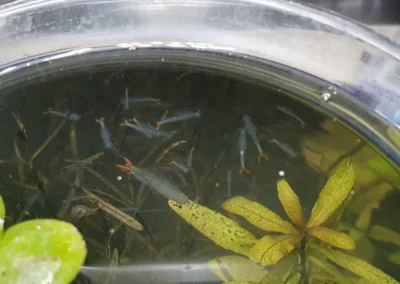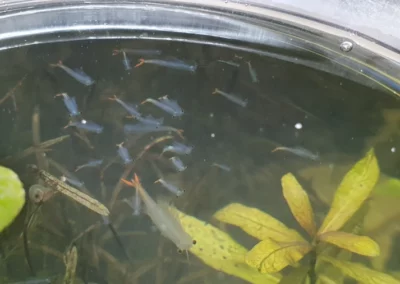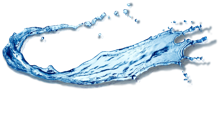
Organismi
Streptocephalus sirindhornae
..by Johnny BettaSuperRed
Artemia di acqua dolce
L’artemia è un’animale veramente affascinante, sta ad un livello abbastanza basso della catena alimentare e grazie alle sue particolarità è un anello molto importante che permette la sopravvivenza di tutto il mondo animale e vegetale.
Esistono artemie di acqua doce e di acqua saltata, lo Streptocephalus sirindhornae è una specie di acqua dolce.
Vengono chiamati anche “gamberetti fatati” per la delicatezza e la dinamica del loro nuoto.
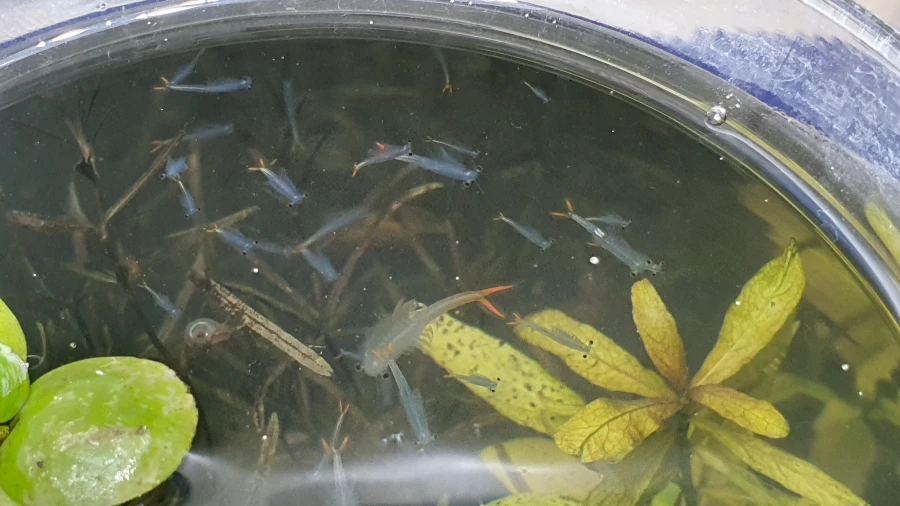
Streptocephalus sirindhornae allevate in acquario
l genere Streptocephalus comprende tantissime specie ma le artemie d’acqua dolce sono molte di più ed appartengono anche ad altri generi.. Qui sotto un esempio delle specie appartenenti al genere Streptocephalus per comprendere meglio quante sono..
Fonte Wikipedia inglese:
- Streptocephalus annanarivensis Thiele, 1907
- Streptocephalus antillensis Mattox, 1950
- Streptocephalus areva Brehm, 1954
- Streptocephalus bidentatus Hamer & Appleton, 1993
- Streptocephalus bimaris Gurney, 1909
- Streptocephalus bourquinii Hamer & Appleton, 1993
- Streptocephalus bouvieri Daday, 1908
- Streptocephalus cafer (Lovén, 1847)
- Streptocephalus caljoni Beladjal, Mertens & Dumont, 1996
- Streptocephalus cirratus Daday, 1908
- Streptocephalus cladophorus Barnard, 1924
- Streptocephalus coomansi Brendonck & Belk, 1993
- Streptocephalus dendrophorus Hamer & Appleton, 1993
- Streptocephalus dendyi Barnard, 1929
- Streptocephalus dichotomus Baird, 1860
- Streptocephalus distinctus Thiele, 1907
- Streptocephalus dorothae Mackin, 1942
- Streptocephalus dregi G. O. Sars, 1899
- Streptocephalus echinus Bond, 1934
- Streptocephalus gauthieri Brtek, 1974
- Streptocephalus gracilis G. O. Sars, 1898
- Streptocephalus guzmani Maeda-Martínez et al., 1995
- Streptocephalus henridumontis Maeda-Martínez & Obregón-Barboza, 2005
- Streptocephalus indistinctus Barnard, 1924
- Streptocephalus jakubskii Grochmalicki, 1921
- Streptocephalus javanensis Brehm, 1955
- Streptocephalus kaokoensis Barnard, 1929
- Streptocephalus kargesi Spicer, 1985
- Streptocephalus lamellifer Thiele, 1900
- Streptocephalus linderi W. G. Moore, 1966
- Streptocephalus longimanus Bond, 1934
- Streptocephalus mackini W. G. Moore, 1966
- Streptocephalus macrourus Daday, 1908
- Streptocephalus mattoxi Maeda-Martínez et al., 1995
- Streptocephalus moorei Belk, 1973
- Streptocephalus namibiensis Hamer & Brendonck, 1993
- Streptocephalus neumanni Thiele, 1904
- Streptocephalus ovamboensis Barnard, 1924
- Streptocephalus papillatus G. O. Sars, 1906
- Streptocephalus potosinensis Maeda-Martínez et al., 1995
- Streptocephalus proboscideus (Frauenfeld, 1873)
- Streptocephalus propinquus Brady, 1916
- Streptocephalus purcelli G. O. Sars, 1898
- Streptocephalus queenslandicus Herbert & Timms, 2000
- Streptocephalus reunionensis Thiéry & Champeau, 1994
- Streptocephalus rothschildi Daday, 1908
- Streptocephalus rubricaudatus (Klunzinger, 1867)
- Streptocephalus rugosus Brehm, 1960
- Streptocephalus sealii Ryder, 1879
- Streptocephalus shinsawbuae Shu, Rogers, Chen & Sanoamuang, 2018
- Streptocephalus similis Baird, 1852
- Streptocephalus simplex Gurney, 1906
- Streptocephalus sirindhornae Sanoamuang et al., 2000
- Streptocephalus spinicaudatus Hamer & Appleton, 1993
- Streptocephalus spinifer Gurney, 1906
- Streptocephalus spinosus Daday, 1908
- Streptocephalus sudanicus Daday de Dées, 1910
- Streptocephalus texanus Packard, 1871
- Streptocephalus thomasbowmani Maeda-Martínez & Obregón-Barboza, 2005
- Streptocephalus torvicornis (Waga, 1842)
- Streptocephalus trifidus Hartland-Rowe, 1969
- Streptocephalus vitreus (Brauer, 1877)
- Streptocephalus wirminghausi Hamer, 1994
- Streptocephalus woottoni Eng et al., 1990
- Streptocephalus zeltneri Daday, 1910
- Streptocephalus zuluensis Brendonck & Hamer, 1992
Streptocephalus è un genere di gamberetti “fatati” che si trovano in acque temporanee in Africa, Australia, Eurasia e America centrale e settentrionale, la sua antica origine si presume sia in Gondwana.
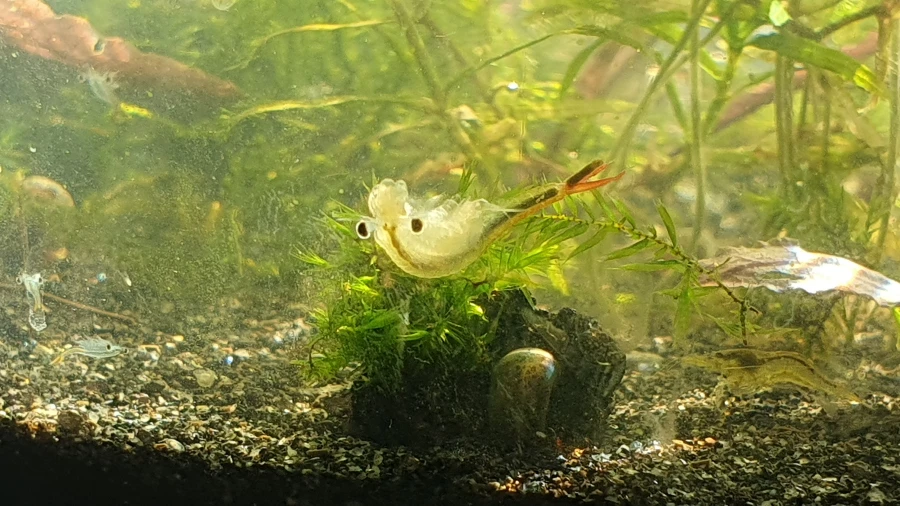
Adulto di Streptocephalus sirindhornae
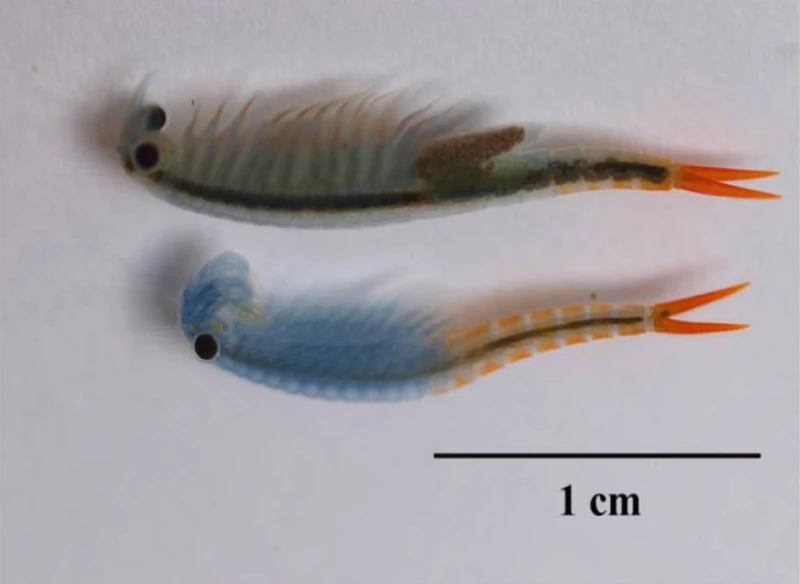
Adulto di Streptocephalus sp. si possono apprezzare le dimensioni, sopra la femmina sotto il maschio
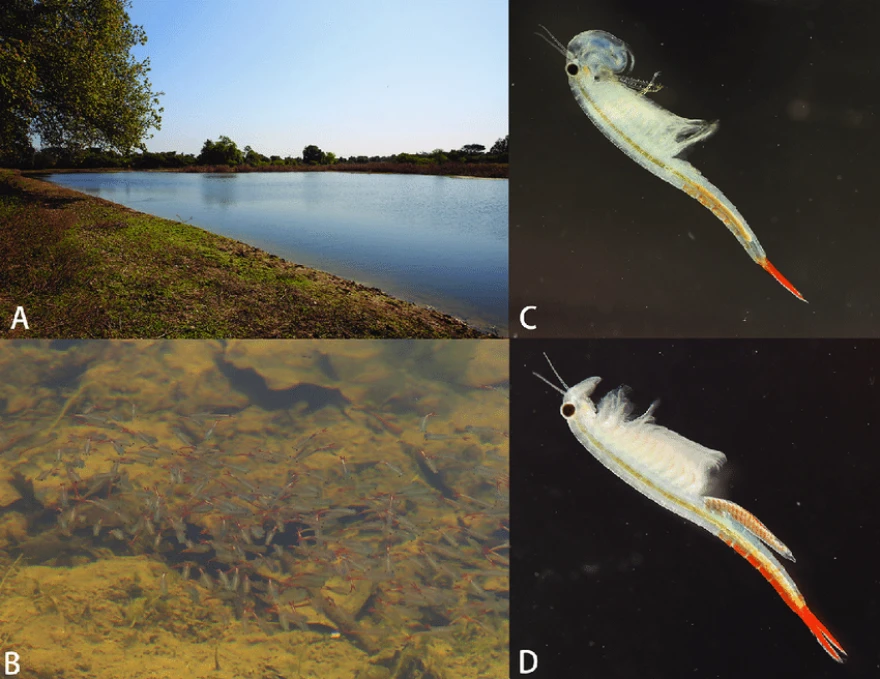
Streptocephalus shinsawbuae sp. Foto A esemplari nel loro ambiente B particolare dell’aggregazione C maschio adulto D femmina adulta.
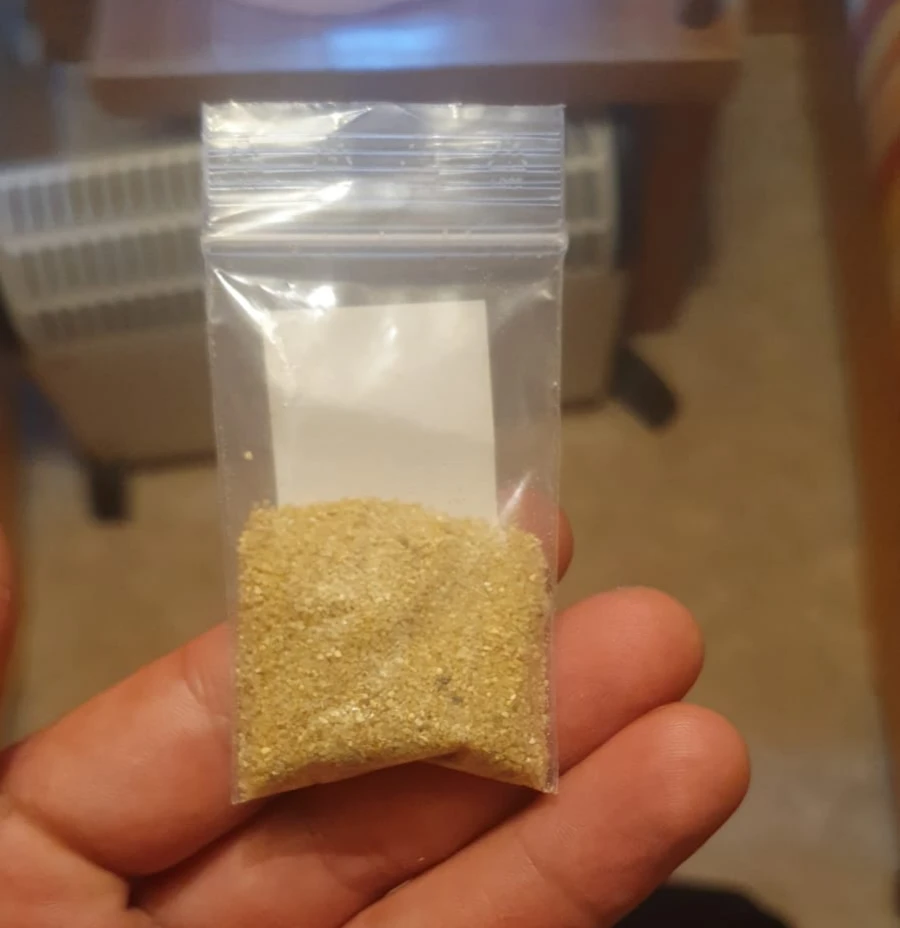
Particolare delle uova da schiudere
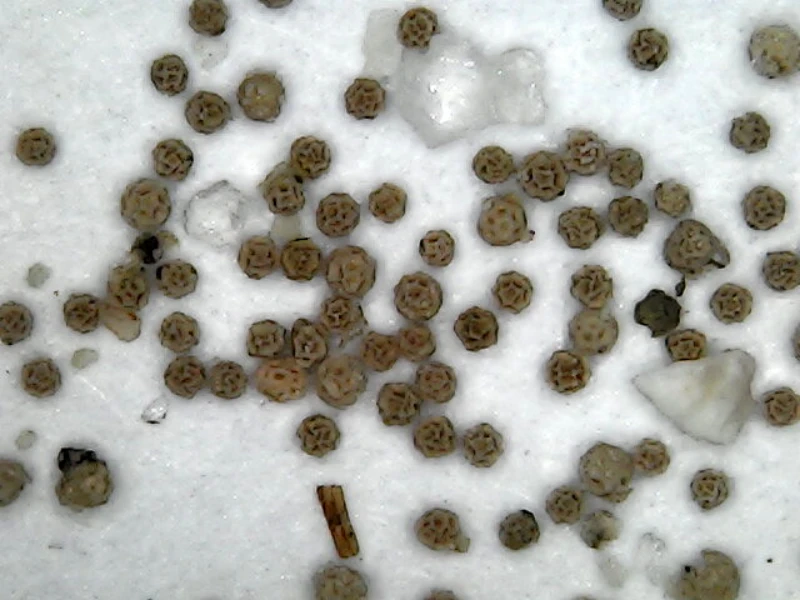
Particolare delle uova da schiudere
Allevamento
L’artemia abita le acque temporanee interne d’acqua dolce. La specie si riproduce sessualmente, con il gambero maschio che feconda le uova della femmina. Una volta completamente formate, le uova vengono rilasciate dalle femmine di gambero. Il gambero maschio è dotato di un’ulteriore appendice frontale allargata utilizzata per afferrare la femmina durante l’accoppiamento. Inoltre, la femmina del gamberetto ha una sacca per la cova attaccata alla base della coda e un’ultima serie di appendici natatorie, che viene utilizzata per contenere le uova (cisti) prima e durante la fecondazione, nonché durante lo sviluppo delle uova. Una volta sostanzialmente sviluppate, le uova nascono dalla sacca di covata.
Video dei Gamberetti Fatati insieme a Yellow Shrimp
Conclusioni
Si possono usare come cibo vivo, una volta ben compreso il loro ciclo biologico è possibile allevarle in grandi contenitori.
L’intero articolo è stato scritto per AqaZero.it; foto e video di Johnny BettaSuperRed; è vietata la riproduzione senza citare la fonte.
